
CMOSとsCMOSの違いは?
sCMOSセンサーは「次世代」のCMOSセンサーと考えられています。
sCMOS技術はCMOS開発の初期段階において、新しいCMOSセンサーと従来のCCDセンサーとのギャップを
埋める為に導入されたものです。当初のCMOSセンサーにはダイナミックレンジ、読み出しノイズ、フレームレート
解像度に妥協があっため、低照度性能とダイナミックレンジおよびハイファイ(高再現性)が重要視去れる科学的な
アプリケーションに適したセンサーとなった。
しかしながら、従来のCMOSセンサーも量子効率や内部ノイズの低減性能が大幅に改善されて、さらに、
sCMOSカメラよりも遥かに低価格で提供されている為、最新のCMOSセンサーの導入も検討する動機になっている。
sCMOSセンサーは、裏面照射と大きな画素サイズを採用して、全体的なノイズがCCDと同様に低い。
また高いダイナミックレンジ、高分解能、広いFOV(Field of View)を同時に達成する。
さらにsCMOSはペルチェ素子を使った冷却装置が採用されており、熱ノイズを減らしています。
また、Camera LinkやCoaXpressのような画像入力ボードを備えた広帯域インターフェイスを必要としている為、
高速フレームレイトな分ビジョンシステムが複雑化する為に結果、高額になっています。
一方、CMOSセンサーは、量子効率やノイズリダクションが改善され、冷却なくてもsCMOSに近づきつつあります。
インターフェイスは、USB3,GigE,10GigEなどの民生用インターフェイスを用いており、
画像入力ボードを必要としない為、システムが複雑にならずコストを軽減することが出来ます。
今後登場する25/100GigEやUSB4,CXPXなどのインターフェイスでは帯域幅が格段に広くなるので、
sCMOSでもコスト面の問題は無くなるかもしれません。
次にいくつか、sCMOSとそれに匹敵するCMOSを比較してみよう。
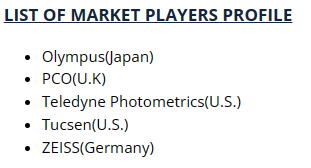
他のプレイヤーは、
- Andor Technology(Oxford Instruments)、
- Leica Microsystems、
- XIMEA、
- Diffraction Limited
- Hamamatsu Photonics
も挙げられる。このうち高速
Scientific CMOS (sCMOS) Camera Market Size - Forecast 2031 (businessresearchinsights.com)
(25) Scientific CMOS (sCMOS) Camera Market Share Research Report [2024-2031] | 100 Pages | LinkedIn
| メーカ | Andor | PCO GmbH | Hamamatsu Photonics | Teledyne Photometrics | ||
|---|---|---|---|---|---|---|
| Sensor Basic Spec | ||||||
| 型式 | Zyla 4.2 Plus | pco.edge 4.2 | pco.edge 3.1 USB | ORCA-Flash4.0 V3 / C13440-20C | ORCA-Quest / C15550-20UP | Prime BSI Express |
| Cemra views | 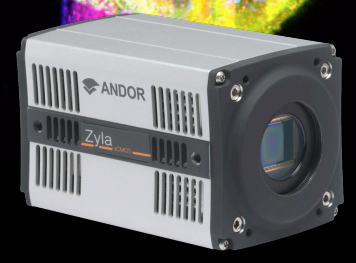 |
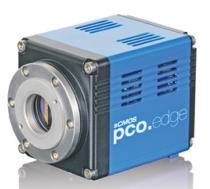 |
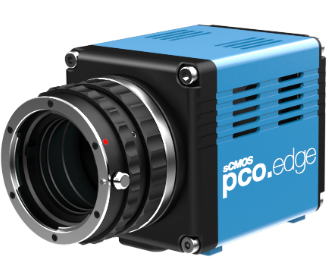 |
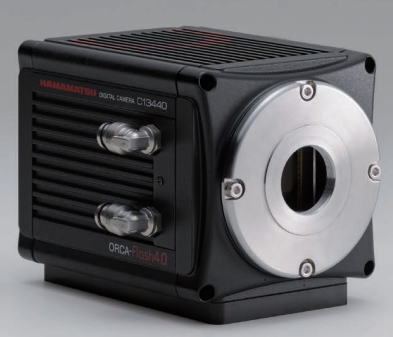 |
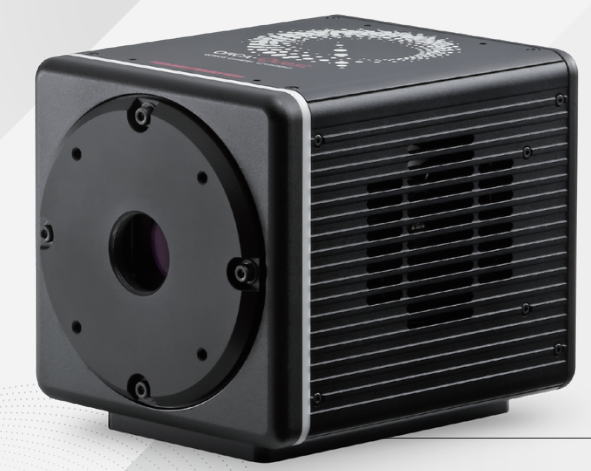 |
|
| Type | scientific CMOS | scientific CMOS | scientific CMOS | scientific CMOS | Quantitative CMOS | scientific CMOS |
| image sensor | CIS2020A | |||||
| Sensor type | Front illuminated sensor | Monochrome or color | Back illuminated sensor | |||
| Resolution(pixels) | 2048 x 2048 | 2048 x 2048 | 2048 x 1536 |
2048 x 2048 | 4096 x 2304 | |
| Pixel size(um) | 6.5x6.5 | 6.5x6.5 | 6.5x6.5 | 6.5x6.5 | 4.6x4.6 | |
| Sensor size(mm) | 13.3x13.3 | 13.3x13.3 | 13.3x10.0 | 13.3x13.3 | 18.8x10.6 | |
| Sensor Noise spec | ||||||
| Fullwell Capacity(e-) | 30000 | 30000 | 30000 | 30000 | 7000 | |
| Redout noise(e-) | 0.90med./1.1rms @slow 1.1med./1.3rms @fast mode |
0.8med./1.3rms @slow 0.9med./1.4rms @fast mode |
1.1med./1.5rms @RS/GR 2.7med./2.9rms @GS |
0.8med./1.4rms @slow 1.0med./1.6rms @fast mode |
xx med./0.27rms @Ultra quiet scan xxmed./0.43rms @fast mode 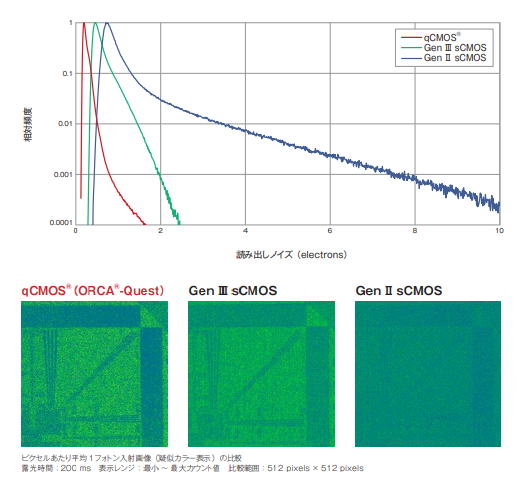 |
|
| Dynamic Range (dB) |
33000:1 calculated by 30000el/0.9 el. med. | 37500:1 calculated by 30000 el./0.8 med. el. 91.5 @Slow scan |
27000:1 calculated by 30000 el./1.1 med. el. | 37000:1 calculated by 30000el/0.8 med el | 26000:1 calculated by 7000el/0.27 el rms | |
| Dark current (e-/pixel/sec) |
Air cooled: 0.10 Water cooled 0.019 @min. temperature |
<0.6@7℃ | < 0.5 @RS/GR +5deg sensor temp. < 0.8 @GS +5deg sensor temp. |
0.06@-10deg air cooling 0.006@-30deg water cooling |
0.016@-20deg air cooling and ambient temp. +25 deg 0.006@-35deg water cooling and water temp. +20deg and ambient temp. +20deg 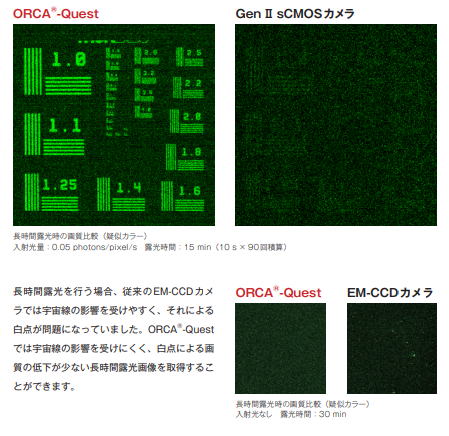 |
|
| DSNU (e- rms) :Dark Signal Non-uniformity | ??? | < 0.3 | < 0.3 @RS/GR < 2.0 @GS |
0.3 | 0.06@ Ultra quiet scan | |
| PRNU (%) : Photo response non-uniformity | <0.01% Half-light range < 0.1% Low light range |
< 0.3 | < 0.2 | 0.06% @ 15000 el 0.3% @ 700 el |
0.1% @ 3500 el | |
| Anti Blooming Factor | 10000 | >10000 | >10000 | |||
| Quantum effiency | 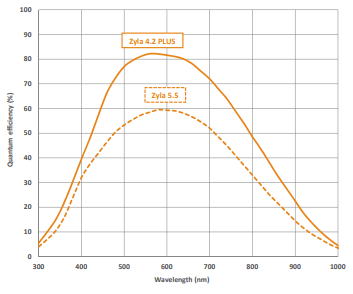 |
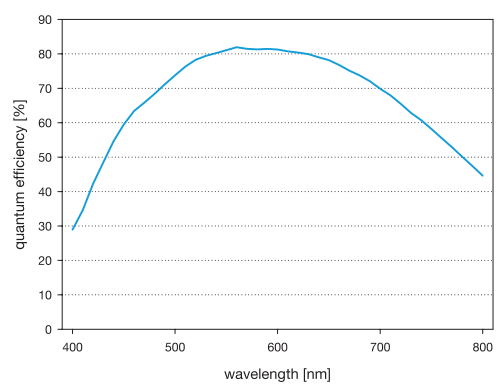 |
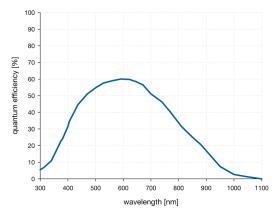 |
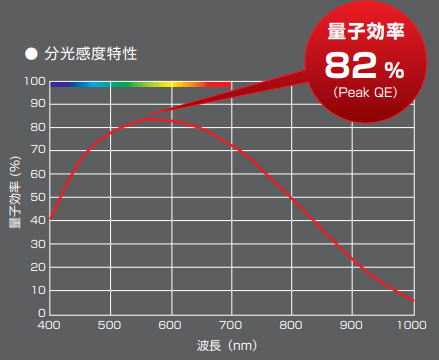 |
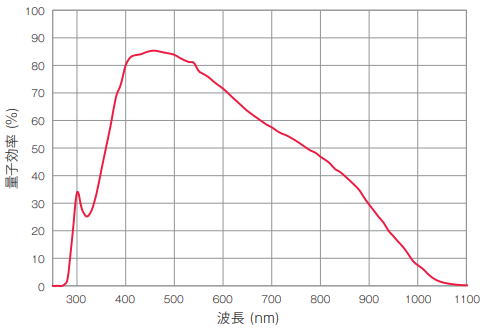 |
|
| Drift | 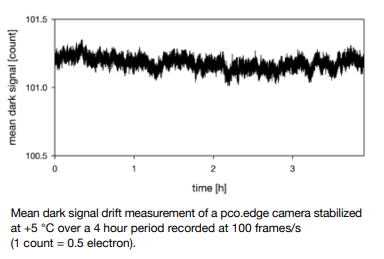 |
|||||
| SNR | 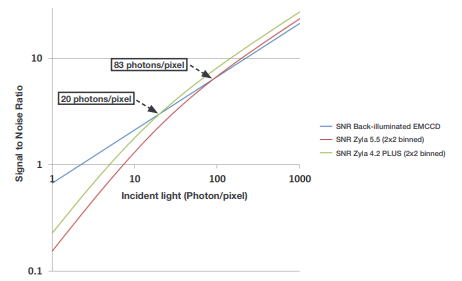 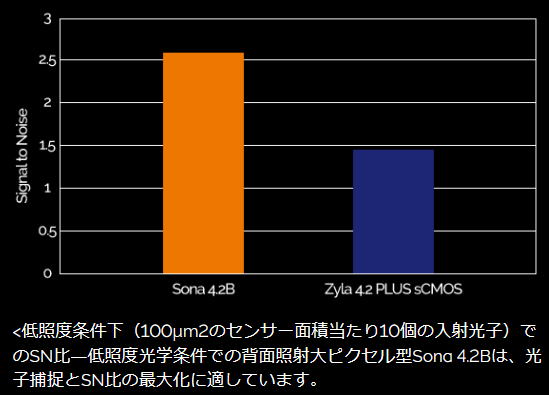 |
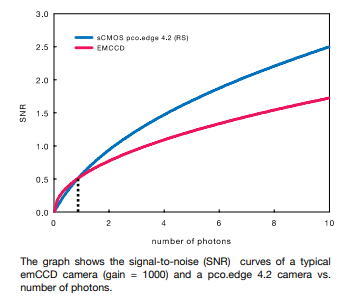 |
||||
| Camera Spec | ||||||
| Frame rate (fps) @full pixels |
101 | 100@ RS, Fast Scan | 50 fps GS/RS | 100 @standard scan and Camera Link | 120 fps@Standard scan CoaXpress, 17.6fps USB 5fps @Ultra quiet scan |
|
| Readout mode | Rolling shutter and Global clear | Rolling shutter with free selectable readout modes | ||||
| Readout time (Read out all pixels) |
10ms @standard scan 33ms @slow scan |
|||||
| Exposure time | 100 us to 10s @RS | 500 usec to 2sec (RS) | 1ms to 10s @standard scan internal sync. and read out all pixels | 7.2us to 1800sec@standard scan 199.9 ms to 1800sec@Ultra quiet scan |
||
| Dynamic Range A/D (bit) | 12 / 16 | 16 | 16 | 16/ 12 / 8 | 16/ 12/ 8 | |
| A/D conversion factor (e-/count) | 0.46 | 0.46 | ||||
| pixel scan rate/ pixel data rate |
540 MHz/ @fast read |
272.3 MHz/ 544.6 Mpixel/s @fast scan |
105.0 MHz / 210 MPixels/s @RS/GR |
1150??Mpixels/s @standard scan |
||
| binning H / V | 2x2, 3x3, 4x4, 8x8 | x1,x2,x4/ x1,x2,x4 |
x2, x4 | x1,x2,x4/ x1,x2,x4 |
||
| non linearity | Better than 99.8% @full light range Better than 99.9% @Low light range (<1000 el.) 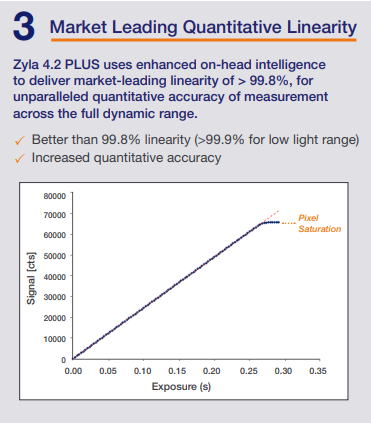 |
< 1% | < 0.6% | 0.5% @EMVA 1288 standard 0.2% / 絶対誤差換算時 1.0 el以下 @<500el |
0.5% @EMVA 1288 standard | |
| cooling method | +5 deg. stabilized selectable; peltier with forced air(fan) or water cooling (both up to 27 deg. ambient) |
+5 deg. stabilized selectable; peltier with forced air(fan) (both up to 27 deg. ambient) |
強制空冷(周囲温度20℃):-10℃ 水冷(水温+20℃):−10℃ 最大冷却(水温+15℃、周囲環境温度+20℃):-30℃以下(Typ.) |
強制空冷(周囲温度25℃):-20℃ 水冷(水温+25℃):−20℃ 最大冷却(水温+20℃、周囲環境温度+20℃):-35℃以下(Typ.) |
||
| data interface | USB 3.0 / Camera Link 10-tap | Camera Link Full (10 taps, 85MHz) |
USB 3.0 | Camera Link Full configuration Deca mode / USB3.0 | USB 3.1 Gen.1 / CoaXPress (Quad CXP-6) | |
| General | ||||||
| Power supply | 12 .. 24 VDC (+/-10%) | AC100V to 240V | AC100V to 240V | |||
| Power consumption | 20 W max (typ. 10W @20 deg) | 70VA@AC100 / 120VA@AC240 | 155VA | |||
| Operating temperature | Air cooled: 0 deg upto 27 deg ambient water cooled: -10deg |
+10 to 40 deg | 0 to +40 deg | 0 to +40 deg | ||
| Operating humid range | 10 % .. 80 %(non-condensing) | 30% to 80% without 結露 | 30% to 80% without 結露 | |||
| Optical interface | F-mount & C-mount | |||||
| CE/FCC cerified | yes | |||||
| Other features | 低読み出しノイズにより光子数識別実現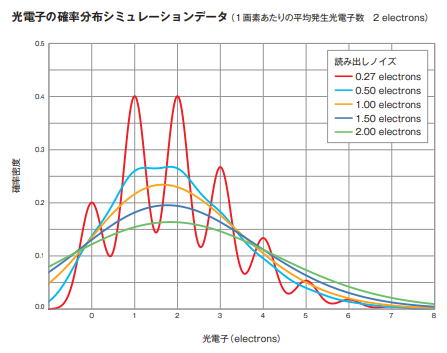 クロストークを低減(トレンチ構造を採用) 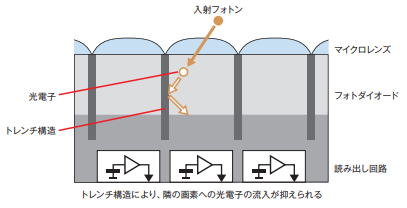 よってMTFの改善している。 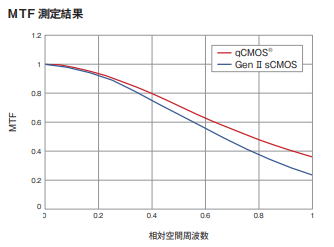 エタロニング抑制 (Siの裏面からの反射光との干渉。 特に裏面照射型EMCCDセンサや、また近赤外光では発生しやすい。) 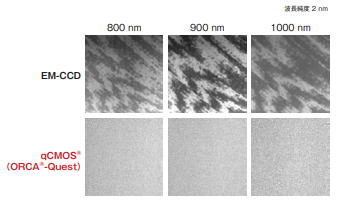 |
|||||
| Link | Zyla-4.2-Specifications-Life-Science.pdf (oxinst.com) | pco.edge_4.2.pdf (physimetrics.com) | pco_edge_3_1_USB_Datasheet.pdf | ORCA-Flash4.0 V3 デジタルCMOSカメラ C13440-20CU (hamamatsu.com) | ORCA-Quest qCMOSカメラ C15550-20UP (ライフサイエンス用) (hamamatsu.com) | Prime-BSI-Express-Datasheet-Rev-A6-07032023.pdf (photometrics.com) |
